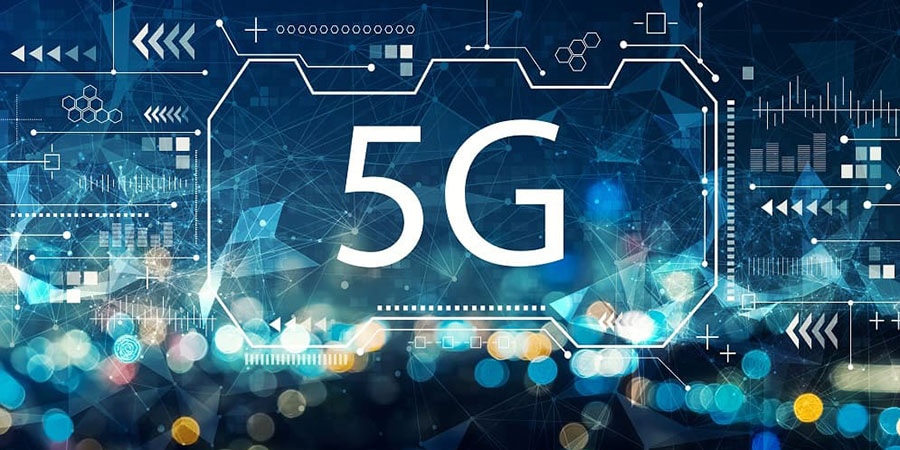According to Deloitte, 2020 is the ‘Year of 5G’ as businesses start to understand the benefits and limitations of the technology and we start to see the first wave of solutions based on 5G begin to emerge. With the arrival of 5G networks, including network slicing with service level agreements (SLAs), comes fast, high volume, low latency data streams that provide a whole host of new business opportunities in IoT devices, autonomous vehicles, and augmented reality.
While the potential is huge, there are also unique challenges presented by the higher frequency bands of 5G network technology in that there is limited penetration through buildings and cell towers need to be closer together than they currently are. No longer are the large and costly microcell towers of previous network generations enough, we now need a massive deployment of small cell towers. Meanwhile, 5G also requires in-building solutions such as distributed antenna systems (DAS) in order to provide complete coverage and support the higher frequencies and increase in data. This is clearly an expensive exercise and network owners will need to ensure maximum performance to see a return on their investments.
Monitoring network performance
Already billions of pieces of data pass across telecommunications networks – social and internet transactions, mobile usage logs, sensor data packets and much more are continuously flowing across networks. While many telecom businesses are adept at collecting and storing all of this information, most are not able to analyze the data with enough depth to really gain value from it. While this can prevent a telco from gaining all sorts of useful insights, it has a particularly negative impact on how network performance is monitored.
Typically, telcos need to monitor the reliability of their networks in order to guarantee the level of service that customers expect. Analytics solutions often become overwhelmed with the sheer volume and velocity of data they are ingesting, and network reliability reports take a long time to produce – meaning any degradation or outage takes far too long to identify and fix. As such, analysts cannot rely on the reports and instead are required to manually analyze hundreds of millions of rows of records or to sample the data to identify trends. This often leads to incorrect assumptions and critical insights being missed. What’s more, when reports are eventually produced, the information they provide is often outdated, incomplete and lacking in detail as they are based on yesterday’s network performance.
These are challenges telcos are facing today. When 5G data is also passing through the network – not just from mobile devices, but also from IoT, autonomous vehicles, augmented realities and all the other next-generation technology we’ll become accustomed to with the advent of 5G – the problem will only get worse.
Telcos need to be able to quickly identify network anomalies and resolve them before customers are impacted, improving service availability and network reliability. They need the ability to drill down through network assets – to individual cell towers or users – to identify equipment malfunctions or devices that are causing abnormal loads on the network. Analysts need to query and explore call detail records, enriching them with geographical insights. They also want to respond immediately to alerts of cyber breaches, to patch vulnerabilities before data is compromised. And, when 5G becomes a reality, they will also need to ensure the optimum performance of cell towers which will be closer together and subject to interference. 5G’s network slicing capability also adds complexity to network optimization, as different network slices will have different quality requirements. This means real time end to end analytics is crucial for resource orchestration and management.
Answers at the speed of thought
Traditionally Central Processing Units (CPUs) have been used to process data. The hardware is designed to handle a wide-range of tasks quickly but are limited in the number of tasks that can be run at the same time making it challenging to process the vast quantities of data traversing telecoms networks. However, thanks to advances in technology, Graphic Processing Units (GPUs) – which were initially designed for complex image rendering and data-based visualization, such as high-end computer gaming – can now be used to help speed-up data analysis. GPU-based solutions offer massive parallel computing power that is designed for extreme scale and speed, making them perfect for the large volume and high-velocity data needs of telecoms network operators.
With data visualization software of top, telecommunication network operators, engineers, and data scientists are able to analyze and visualize complex data records at massive scale. The ability to query and explore vast quantities of data allows users to ask more questions and dig deeper into the information, receiving answers in milliseconds instead of the hours or days of traditional analytics solutions.
In today’s world this allows data scientists to interact with datasets over, for example, heatmaps to gain real-time insights around network coverage and speed and quickly identify any issues. However, in an era of 5G telco analysts can layer their existing network datasets with the modelling and coverage analysis needed to build and optimize 5G networks. They can also rapidly run millions of complex calculations aimed at reducing interference between the innumerable towers of 5G networks, further increasing network performance and ensuring reliability.
With more devices than ever connected to telco networks, managing the infrastructure is becoming increasingly challenging. The problem is only going to increase and now is the time to find the solution, before the data tsunami hits. With the ability to visualize the entirety of datasets, at speeds fast enough to spot network problems as they occur and before customers do, telcos can gain a huge advantage. And, in a highly competitive marketplace, the speed of GPUs will unlock a whole host of new opportunities from identifying where to place Wi-Fi access points for mobile data offloading to reducing customer churn. Opportunities no network provider can afford to miss.
By Herfini Haryono, VP of industry verticals at OmniSci





